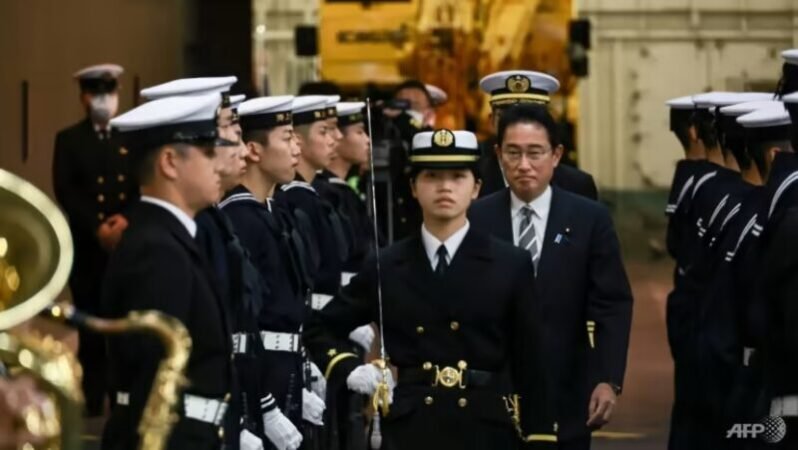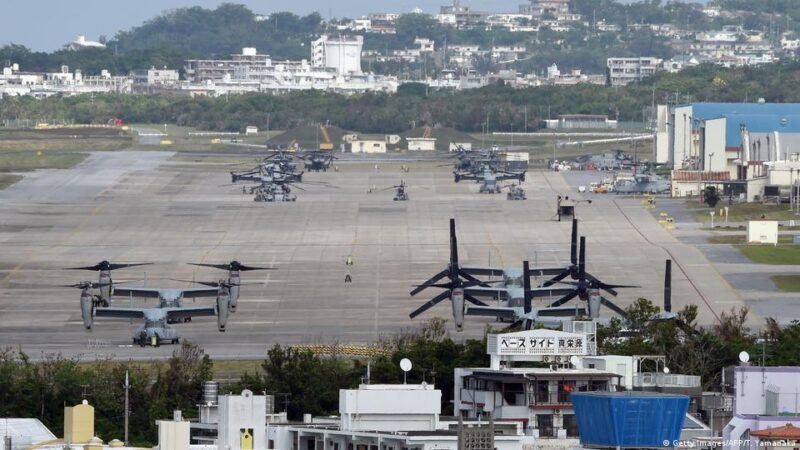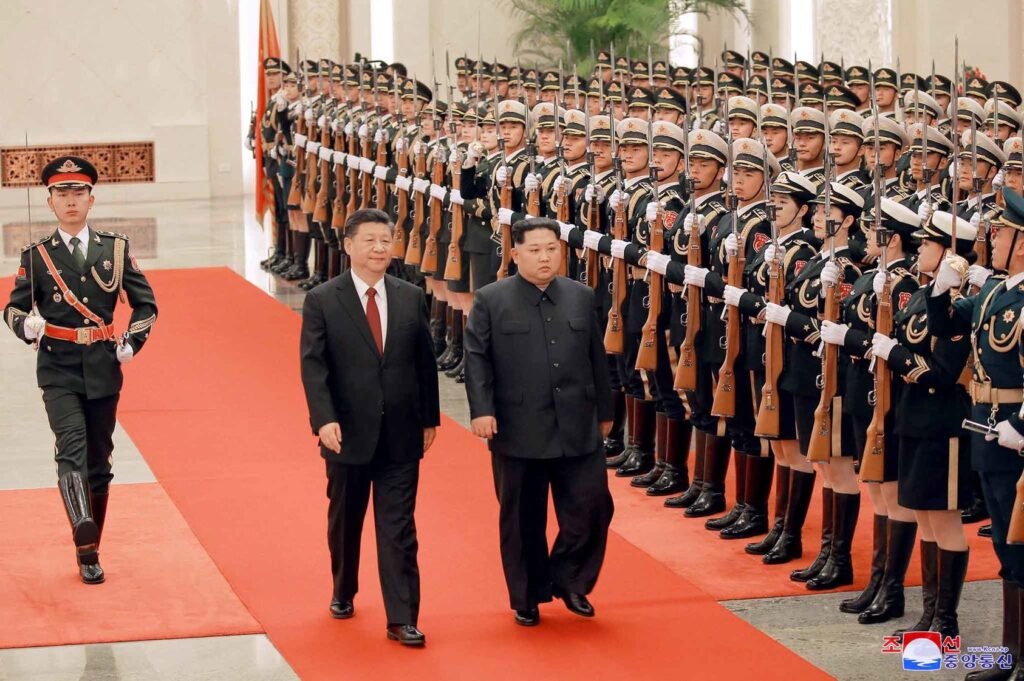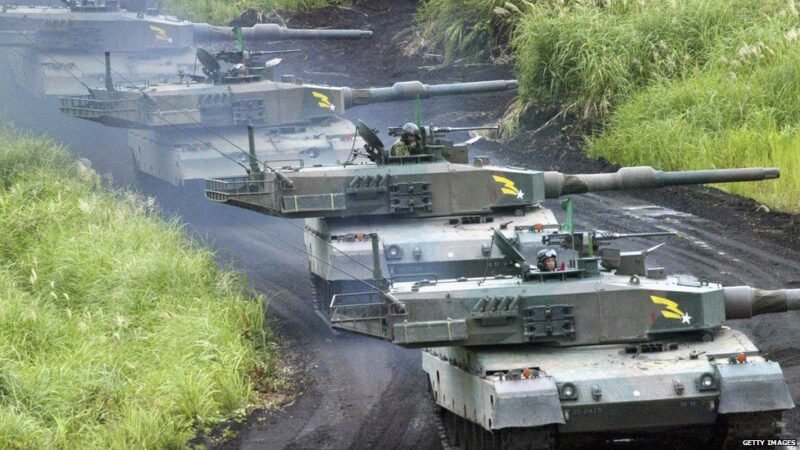What Japan sensed! A Silent War Cry or Heed?

Japan sensed that it may become the future Ukraine of East Asia which compelled them to respond war cry in the altered belligerent security environment of the region. Unfriendly accumulation, friendly saturation and rising aspirations led them to take utmost heed in the coming times.
Japan is currently engaged in multiple defence cooperation with the allied countries globally and are balancing the momentum of East Asia booming with Chinese adventurism and North Korean missile tests. In the last three months, Japan re-energised its defence cooperation with their major partners like the USA, Australia, India, South Korea, France and Germany. Yesterday’s poll conducted by Kyodo news agency in Japan showed that 60% of Japanese back the government’s bid to acquire counterstrike capabilities against enemy bases. In addition, the maritime cum military exercises with favoured countries are in full swing focusing on Indo-Pacific and related high waters. Hosting 2+2 meetings with Defence Ministers & Foreign Ministers, Chief of Staff, diplomatic convoys and vice-versa is an often activity in Tokyo.
Banzai – the Japanese war cry was last raised in World War II worthily. In recent times, its silent version is well heard in the nooks and corners of the globe. Japanese leaders started the Policy of Realignment in the East Asian region as well as with the first world leaders in the West. In the official Japanese Diplomatic Bluebook, it is mentioned that due to the complex geopolitical environment and conditions in various countries around Japan… with diverse historical and social backgrounds… faced with a new state of fluidity. This environment requires Japan to give careful and circumspect consideration to its relations with its neighbours as well as allies from far lands. The complexity around Japan started just after the post-pandemic times when North Korea and China activated their militaristic and naval adventures in the Sea of Japan & extended waters. The fluidity of the ocean itself drives into the countermeasures of Japan which evidently gives a boost to the allies to operate in the region.
In the common world, defence with trade cooperation and exchanges refers to the efforts for strengthening the group or one-on-one cooperation to balance the power with adequate reinforcements. But here in the case of Japan, it seems they are collecting the pearls of a broken necklace to mend a ship in defence of their lands. It is not a hidden truth that Japan is living under the security umbrella of the USA and with past decades Americans took a sizeable chunk from their budget finances as well as strategic land. As per the survey of Japan Today newspaper, around 80% of Japanese think Okinawa’s US base is an unfair burden on the country. Not even the public, but multiple political parties in Japan opposed the increasing hold and say of the USA in Japanese security agencies and structure. Another example of unrest was highlighted in recent days when the people of Okinawa re-elect Governor Sakima Atsushi (Opposition candidate of governing Liberal Democratic Party) in local elections who is a staunch voice against the expansion of US bases in Japan. The other example is a legal tug-of-war between Okinawans & Japanese central government where they are opposing the establishment of a US Airbase in Futenma. Here interesting thing is to mention that 70% of US bases are in Okinawa only which is disturbing the very identity of the Japanese prefecture and hitting the economy weaved around tourism.

The geopolitics of the East Asian region is facing four main contentions currently:
- Civilisational tussle with China,
- Conflicts arose over own past deeds with South Korea,
- Counter-ally rivalry with North Korea, and
- Boundary cum administrative conflict with Russia.
With all its neighbours, Japan is engaged in several types & modes of friction in which only Korean and Russian are its own genuinely. The other two are made up or we can say built commonly with them to escalate geopolitical tensions whenever required. In mid of all this, the magic pigeon of China as well as the USA i.e. Taiwan bumped into the scenario with a lot of noise from both parties. In this recurring scenario, Japan ditched the security architecture of total dependence on allies and turned the wheel of being self-reliant in at least daily marine/naval activities on their adversaries’ fronts. The process of bolstering defence capabilities is signalled in the National Security Strategy (NSS), Medium Term Defense Program (MTDP) and National Defense Program Guidelines (NDPG) documents of 2022. The Japanese policymakers directly guide the rest to engage in policy discussions for acquiring defence capabilities as well as signalled manufacturers to engage in discussions with like-minded corporations engaged with Japanese Maritime Self-Defense Forces (JMSDF).
After World War II, this is the second revitalisation where the government is directly financing or engaging in the licensed production of defence technologies. Now the question arises what made Japan to think ahead of a long-lasting ‘Pacifist Constitution’? The new interpretation is Sustenance. The ruling coalition of LDP & Komeito strongly favours the revisiting of the constitution to make itself reliant in defence which they tried in multiple instances like – to turn defence agency into a full-fledged ministry (2007), developing of seamless security legislation (2014), allowing the collective self-defence (2014), enactment of security laws (2015), development of missile defense (2017) and manufacturing of new series of submarines (2018) etc. The political communities ruling in Japan is pushing defence development as one of the biggest agenda of today.

Japan sensed the silent war cry from their Eastern neighbours and is realigning itself to cope up with the lacuna they had in defence architecture. For that, the recalibration of security equations with the far and near allies are important currently as the immediate stepping up of will result in chaos from adversaries nearby. From the perspectives of China and North Korea, the expansion of Japanese defence capabilities is a direct attack on the regional power balance. They will staunch it as an internationally acclaimed tactic used and recognised in every continent as of now. This will rapidly escalate in the coming days as changing equations in Indo-Pacific will fuel dramatic exchanges in diplomatic & defence circles.
The necessary heeds which Japan is exercising have multiple angles to look into. The current situation of lagging in operational defence infrastructure may be solved with indigenous production. But the if the less cost-effective equipment doesn’t satisfy the required capabilities or standards in a limited timespan, it will strangle Japan itself. The sophisticated defence techs take much time and R&D to develop, train and test as per the SOPs followed by defence standards. Japan is currently not in the stage to pursue these time-consuming processes. The options which Japan is following currently are –
- Ensuring the survival, integration and restructuring of critical small & medium-sized businesses that are dependent on defence businesses by manufacturing mid-segment vessels.
- Identified the capabilities of allies categorically and deployed them where they need.
- Allowing spin-off technologies from the commercial to the defence sector by allowing trade with local private firms rather than traditional defence industries.
- Subsidizing local partners in defence production with the materials required and necessary exemptions in procurement.
- Re-energising dormant defence cooperation with capable like-minded countries.
Japan is arming itself very aggressively to match the counter ability they need from probable attacks from the West. It is an opportunity for Japan, to cope with years of stagnation in military spending. It was long overdue, especially for maritime and air defence systems. The precarious challenges from neighbours led to new advancements in Japanese cyber and space defence capabilities too which were long neglected. Additionally, it is improving the competitiveness of its technology sector too. The new establishments like the Acquisition, Technology and Logistics Agency under the Ministry of Defense provide incentives for Japanese companies and university researchers to develop new military techs locally.

In totality, Japan took the gist of the recent aggressions from the corners of the world and assessed its position in the region. It led them to find out that the most volatile condition in East Asia would expose them to the front for taking heat. They learnt from the World War and their security provider that their own wars must be fought only on far lands, not at home. By imbibing this lesson, Japan is trying to push the war on the door to the peninsular and mainland Asia in the East and North East by tackling the allies in coordination. The other conclusion drawn from the preparedness of Japan is that they are denying to remain at peril when the military superpowers collide in future. The preparedness of Japan itself yelling that creation of defence capabilities is more of a deterrence, not a real counterstrike which they will lodge at first. Japan is thinking far from survival as it knows if war comes to its doors, it will lag them through another lost decade. One should never assess in Game of Power Struggles – ‘when protector turns predator’.



















